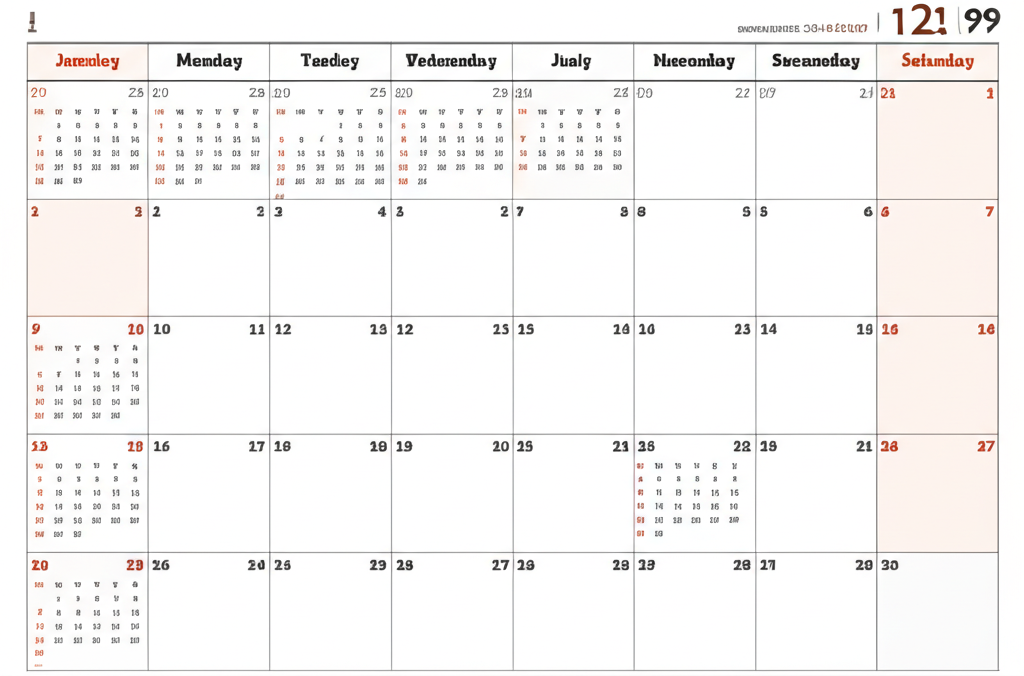Year-Round Tax Planning Calendar for Manufacturers

Why Year-Round Tax Planning Matters for Manufacturers
For manufacturers, tax planning isn't just a year-end scramble. Complex operations, significant capital investments, fluctuating inventory levels, and specific industry regulations mean proactive, year-round tax planning is crucial. Staying ahead helps manage cash flow, avoid penalties, maximize available deductions and credits, and make informed strategic decisions.
The Benefits of Continuous Planning
- Improved Cash Flow Management: Anticipate tax liabilities and plan payments.
- Maximized Deductions & Credits: Identify and leverage opportunities like Section 179, R&D credits, and Bonus Depreciation throughout the year.
- Reduced Tax Season Stress: Avoid the last-minute rush by maintaining organized records and addressing issues proactively.
- Informed Decision-Making: Understand the tax implications of potential investments, hiring, or operational changes before you make them.
- Penalty Avoidance: Ensure timely estimated tax payments and compliance with filing requirements.
A Manufacturer's Tax Planning Calendar
Here's a quarterly guide to keep your manufacturing business on track:
Q1: January - March
- Finalize Prior Year Books: Close out the previous year's accounting records accurately.
- Issue W-2s & 1099s: Meet the January 31 deadline for distributing forms to employees and contractors. File copies with the IRS/SSA.
- Review Year-End Financials: Analyze last year's performance and identify preliminary tax outcomes.
- Q4 Estimated Tax Payment (Prior Year): Make the final estimated payment for the previous tax year by January 15th.
- Gather Tax Documents: Start collecting all necessary documents for tax preparation (income statements, balance sheets, asset purchase details, payroll records, etc.).
- Plan for Tax Filing: Schedule time with your CPA to discuss tax preparation and potential strategies.
Q2: April - June
- File Tax Returns or Extension: File corporate/partnership tax returns (often March 15 or April 15, depending on entity type) or file for an extension. Personal returns are typically due April 15.
- Q1 Estimated Tax Payment (Current Year): Make the first estimated payment for the current tax year (usually April 15).
- Review Q1 Performance: Analyze financial results and adjust forecasts for the rest of the year.
- Mid-Year Strategy Check: Assess progress towards financial goals and tax planning objectives. Consider timing for capital expenditures.
- Evaluate Inventory Methods: Review LIFO/FIFO or other inventory valuation methods for potential tax impact.
Q3: July - September
- Q2 Estimated Tax Payment (Current Year): Make the second estimated payment (usually June 15).
- Mid-Year Tax Review: Meet with your CPA to review year-to-date financials and project year-end tax liability. Adjust strategy as needed.
- Capital Expenditure Planning: Evaluate potential equipment purchases and the impact of Section 179 / Bonus Depreciation. Timing matters!
- R&D Tax Credit Review: Assess eligibility and documentation for the Research and Development tax credit based on ongoing activities.
- Budget Adjustments: Refine budgets based on performance and updated projections.
- Q3 Estimated Tax Payment (Current Year): Make the third estimated payment (usually September 15).
Q4: October - December
- Year-End Tax Projections: Finalize projections for income and tax liability. Identify remaining opportunities for tax savings.
- Maximize Deductions: Make any final qualifying purchases for Section 179 or Bonus Depreciation (equipment must be placed in service by Dec 31).
- Retirement Plan Contributions: Maximize owner and employee retirement plan contributions.
- Review Accounts Receivable/Payable: Manage year-end timing of income and expenses where possible.
- State & Local Tax (SALT) Review: Assess nexus and compliance requirements in all operating states.
- Documentation Gathering: Ensure all financial records and supporting documents for the year are organized for tax preparation.
- Plan for Next Year: Begin preliminary budgeting and strategic planning for the upcoming year.
Stay Proactive
This calendar provides a framework, but your specific needs may vary. Consistent communication with your CPA throughout the year is the key to effective tax planning for your manufacturing business. Don't wait until tax season – start planning today.
Frequently Asked Questions
Q: Can I carry forward any unused deduction?
A: Yes, if your Section 179 deduction is limited due to taxable income, you can carry forward the unused deduction to future years.
Q: How often should I meet with my CPA?
A: For manufacturing businesses, quarterly meetings are recommended to stay on top of tax planning opportunities and address any changes in your business operations.
Q: What documentation should I keep for tax purposes?
A: Keep detailed records of all business transactions, including receipts, invoices, bank statements, payroll records, and documentation for asset purchases and improvements.
Ready to Implement Proactive Tax Planning?
Don't let tax deadlines sneak up on you. Schapira CPA can help you build a customized year-round tax strategy tailored to the unique needs of your manufacturing business.
Schedule a Consultation